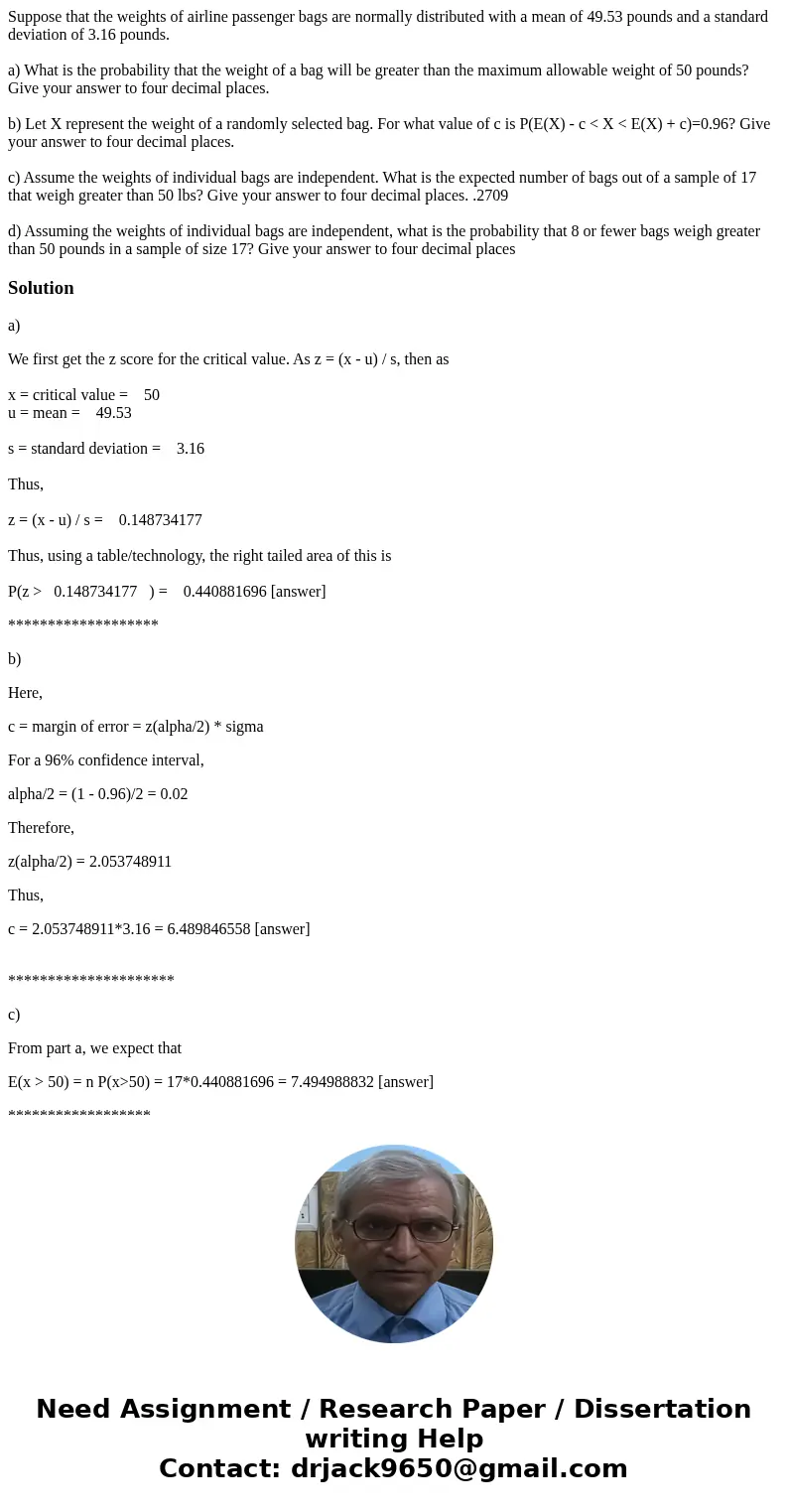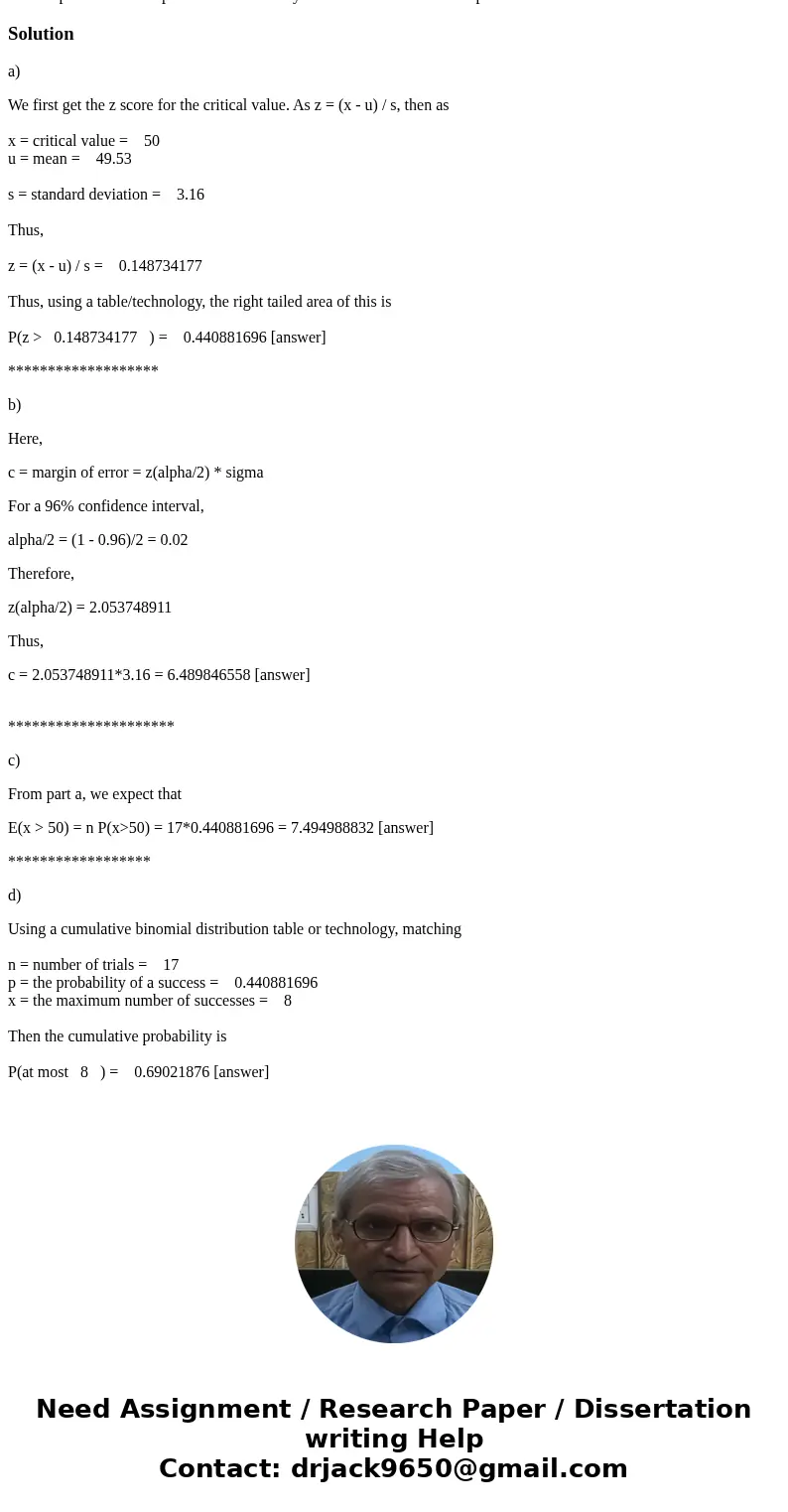Suppose that the weights of airline passenger bags are norma
Suppose that the weights of airline passenger bags are normally distributed with a mean of 49.53 pounds and a standard deviation of 3.16 pounds.
a) What is the probability that the weight of a bag will be greater than the maximum allowable weight of 50 pounds? Give your answer to four decimal places.
b) Let X represent the weight of a randomly selected bag. For what value of c is P(E(X) - c < X < E(X) + c)=0.96? Give your answer to four decimal places.
c) Assume the weights of individual bags are independent. What is the expected number of bags out of a sample of 17 that weigh greater than 50 lbs? Give your answer to four decimal places. .2709
d) Assuming the weights of individual bags are independent, what is the probability that 8 or fewer bags weigh greater than 50 pounds in a sample of size 17? Give your answer to four decimal places
Solution
a)
We first get the z score for the critical value. As z = (x - u) / s, then as
x = critical value = 50
u = mean = 49.53
s = standard deviation = 3.16
Thus,
z = (x - u) / s = 0.148734177
Thus, using a table/technology, the right tailed area of this is
P(z > 0.148734177 ) = 0.440881696 [answer]
*******************
b)
Here,
c = margin of error = z(alpha/2) * sigma
For a 96% confidence interval,
alpha/2 = (1 - 0.96)/2 = 0.02
Therefore,
z(alpha/2) = 2.053748911
Thus,
c = 2.053748911*3.16 = 6.489846558 [answer]
*********************
c)
From part a, we expect that
E(x > 50) = n P(x>50) = 17*0.440881696 = 7.494988832 [answer]
******************
d)
Using a cumulative binomial distribution table or technology, matching
n = number of trials = 17
p = the probability of a success = 0.440881696
x = the maximum number of successes = 8
Then the cumulative probability is
P(at most 8 ) = 0.69021876 [answer]


 Homework Sourse
Homework Sourse